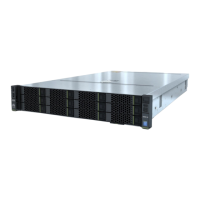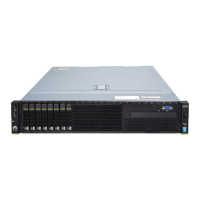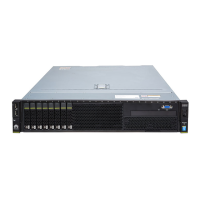d. Run the cat /proc/cmdline command. If the command output contains
"pciehp.pciehp_force=1 pci=pcie_bus_perf", the kernel is configured successfully.
Figure 3-39 Checking the configuration
Step 5 Upgrade the OS kernel.
l Example 1: RHEL 7.3
Upgrade the kernel of RHEL 7.3 to kernel-3.10.0-514.26.2.e17.x86_64 or later to
support orderly hot swap of NVMe drives.
a. Run the uname -r command to check the current kernel version.
Figure 3-40 Kernel version
b. Log in to the official Red Hat website to download the kernel upgrade package
(kernel-3.10.0-514.26.2.e17.x86_64.rpm for example).
c. Run the rpm -ivh kernel-3.10.0-514.26.2.e17.x86_64.rpm command to upload the
upgrade package to the OS for installation.
d. Restart the OS after the installation is complete.
e. Run the uname -r command. If 3.10.0-514.26.2.el7.x86_64 is displayed, the kernel
is upgraded successfully.
Figure 3-41 Checking the kernel version
l Example 2: SUSE 12.2
Upgrade the kernel of SUSE 12.2 to kernel-default-4.4.74-92.32.1.x86_64 or later to
support orderly hot swap of NVMe drives.
a. Run the uname -r command to check the current kernel version.
Figure 3-42 Kernel version
b. Log in to the official SUSE website to download the kernel upgrade package
(kernel-3.10.0-514.26.2.e17.x86_64 for example).
FusionServer Pro CH121 V5 Compute Node
User Guide
3 Basic Operations
Issue 06 (2019-08-10) Copyright © Huawei Technologies Co., Ltd. 58

